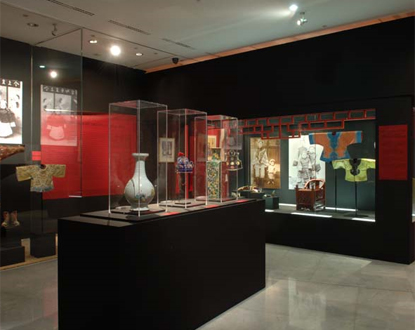The exhibition “Children of China, Little Tigers and Young Dragons” is a multifaceted approach, simultaneously social, ethnological, religious, and aesthetic, to Chinese childhood. Through costumes and objects from daily life or court life, it explores two opposing worlds: that of the popular classes and that of the elites.
The theme of the child is very ancient in Chinese art.
The tiger and the dragon, the two symbols chosen as the title to convey this duality, have been frequently associated with China throughout the centuries. In the Chinese popular imagination, the tiger is a fierce and courageous animal, credited with the power to protect the child from evil spirits. This is why little ones were dressed in hats, collars, and booties with motifs of this feline, giving them the image of a little tiger. As for the dragon, it is the emblem of the imperial family, reserved from a young age for the children of the elite, the young dragons. Their ceremonial costumes, like those of the adults, were abundantly decorated with this fantastic figure.
Everyday life of the children, education, games, festivals, beliefs, and superstitions, all these different themes are addressed during the exhibition through a collection of objects: clothing and accessories, childcare furniture, paintings, tapestries, photographs, posters, porcelains, statuettes, figurines… which depict the touching, magical, and unique universe of the children of China. The exhibition of lotus shoes evokes the plight of little girls with the very painful practice of foot binding that began at a young age. The end of the exhibition is devoted to the Maoist period, featuring toys, school accessories, books and notebooks, objects with Mao’s image, as well as propaganda posters on the theme of childhood.
This collection of approximately two hundred and fifty items, the oldest dating back to the Tang dynasty (618-907) and the most recent to the 1980s, comes from the private collection of François Dautresme and the National Museum of Asian Arts – Guimet, particularly from the former collection of Krishnâ Riboud.
Learn more: [www.arts-asiatiques.com](https://www.arts-asiatiques.com)


